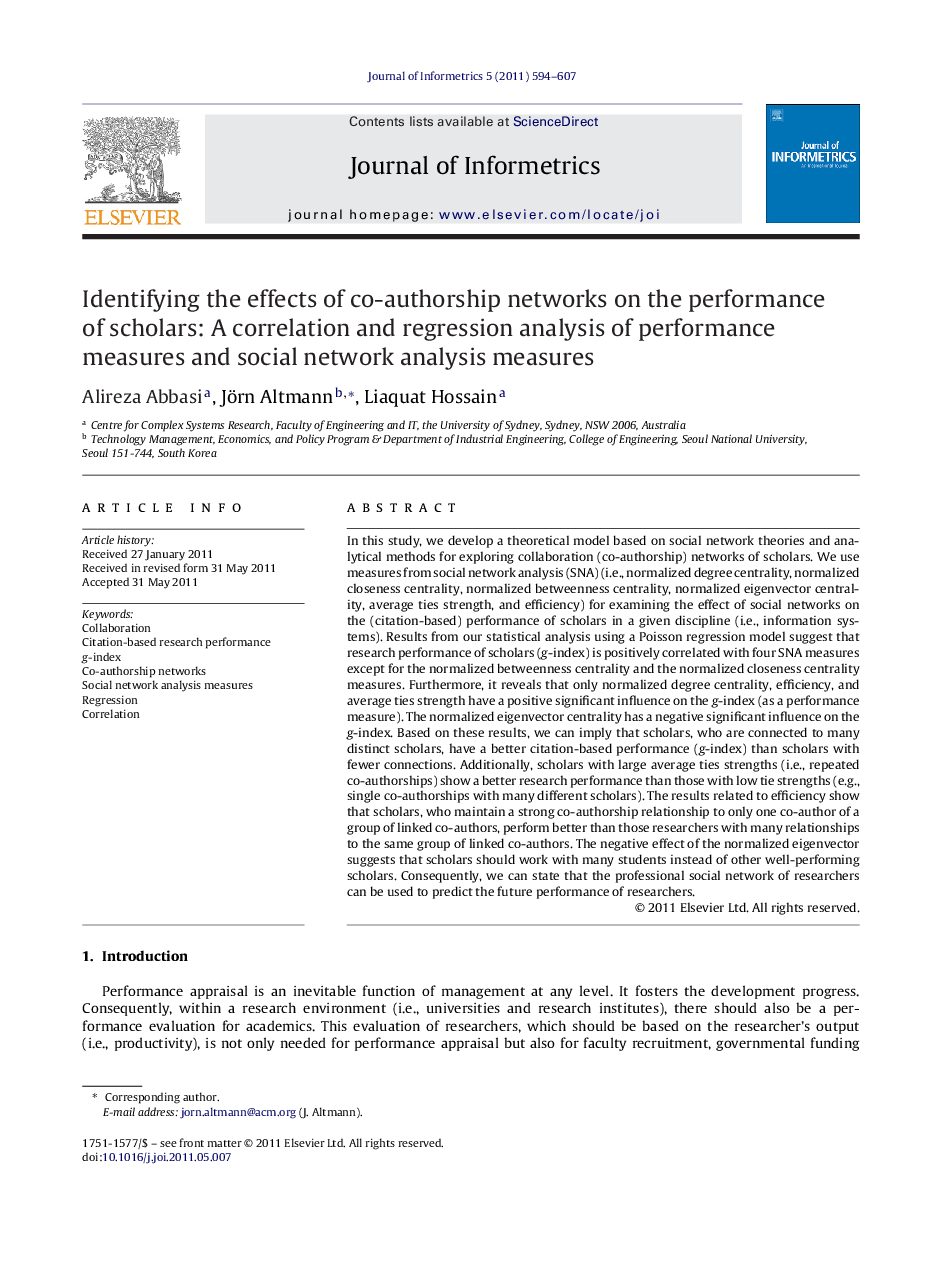| Article ID | Journal | Published Year | Pages | File Type |
|---|---|---|---|---|
| 523491 | Journal of Informetrics | 2011 | 14 Pages |
In this study, we develop a theoretical model based on social network theories and analytical methods for exploring collaboration (co-authorship) networks of scholars. We use measures from social network analysis (SNA) (i.e., normalized degree centrality, normalized closeness centrality, normalized betweenness centrality, normalized eigenvector centrality, average ties strength, and efficiency) for examining the effect of social networks on the (citation-based) performance of scholars in a given discipline (i.e., information systems). Results from our statistical analysis using a Poisson regression model suggest that research performance of scholars (g-index) is positively correlated with four SNA measures except for the normalized betweenness centrality and the normalized closeness centrality measures. Furthermore, it reveals that only normalized degree centrality, efficiency, and average ties strength have a positive significant influence on the g-index (as a performance measure). The normalized eigenvector centrality has a negative significant influence on the g-index. Based on these results, we can imply that scholars, who are connected to many distinct scholars, have a better citation-based performance (g-index) than scholars with fewer connections. Additionally, scholars with large average ties strengths (i.e., repeated co-authorships) show a better research performance than those with low tie strengths (e.g., single co-authorships with many different scholars). The results related to efficiency show that scholars, who maintain a strong co-authorship relationship to only one co-author of a group of linked co-authors, perform better than those researchers with many relationships to the same group of linked co-authors. The negative effect of the normalized eigenvector suggests that scholars should work with many students instead of other well-performing scholars. Consequently, we can state that the professional social network of researchers can be used to predict the future performance of researchers.
► We use SNA measures for examining the social network effect on scholar performance. ► Scholars connected to many distinct scholars have a good citation-based performance. ► Scholars with high average number of repeated co-authorships show a good g-index. ► Scholars with links to only one co-author of a linked co-author group perform well. ► Scholars should work with many students instead of other well-performing scholars.
